Dive into the captivating world of clown plecos with our comprehensive care guide. Explore their unique traits, diet, and tank setup for a thriving aquatic companion.
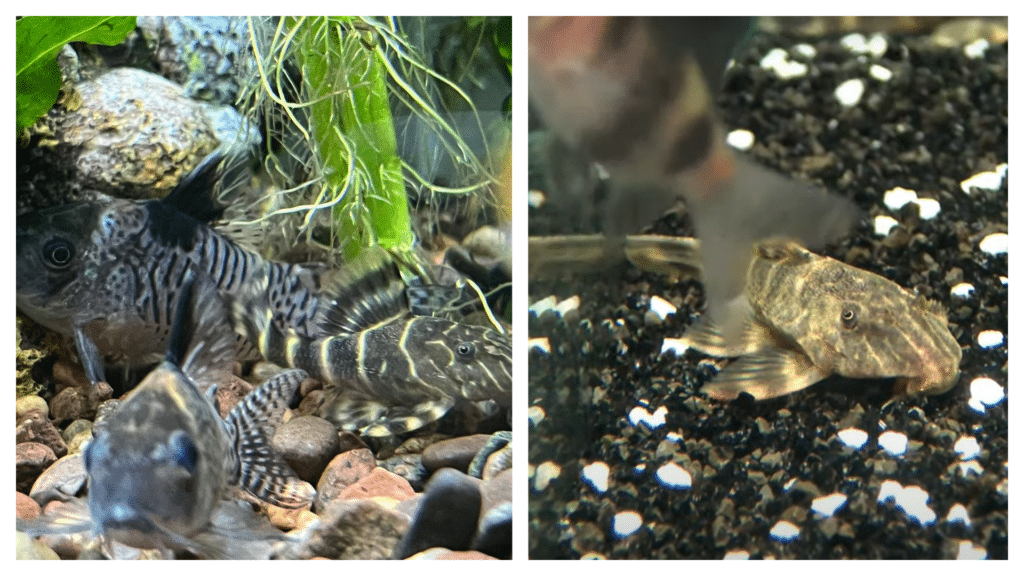
Clown plecos, scientifically known as panaque maccus, are captivating catfish from the Apure River basins in Venezuela and Colombia.
These charming bottom-dwellers, often called clown plecostomus, are an excellent choice for novice and experienced aquarists.
In this comprehensive Clown Pleco care guide, we will delve into their behaviour, diet, size, tank mates, and various other aspects of their care.
The World Bucket List’s interesting facts about clown plecos:
- The scienftic name for this fish is panaque maccus. They get their more commonly known name from their clownish or whimsical appearance.
- They have a unique and striking appearance, which includes broad heads, thick bodies, and a distinct pattern of spots and stripes, making them visually appealing in aquariums.
- Their most distinctive feature is the prominent dorsal fin that resembles a set of whiskers, which are pretty eye-catching.
- These catfish are primarily bottom-dwelling fish, often found near the substrate in their natural habitat.
- In the wild, Clown Plecos originate from the Apure River basins in Venezuela and Colombia, which are characterised by low water flow and an abundance of driftwood.
Clown pleco size and appearance – spots and stripes
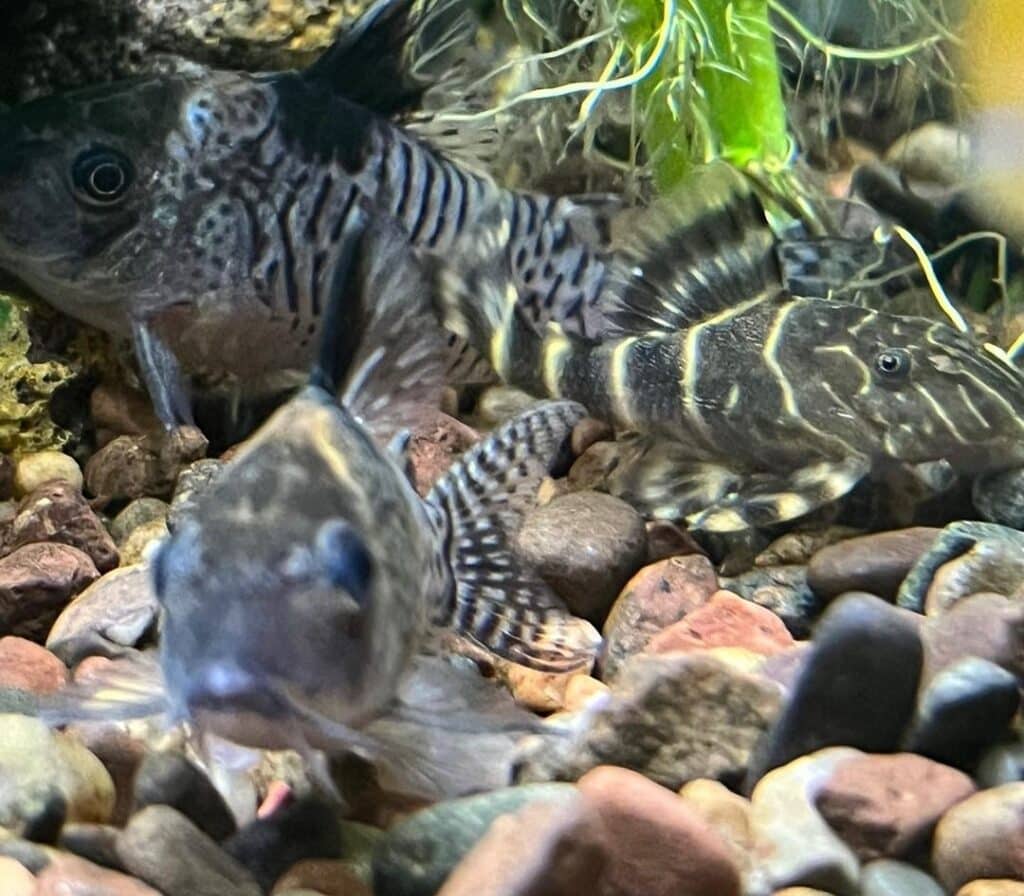
Clown plecos are relatively diminutive fish, with males typically growing to be around 3-4 inches long, while their female counterparts tend to be slightly smaller.
Their appearance is most commonly characterised by their broad bodies and thick heads together with an interesting pattern of spots and stripes that adorn their bodies, rendering them the ideal “clown” of any aquatic community.
Their most distinct feature is the prominent dorsal fin, which resembles a set of signature “whiskers”.
Tank size and water conditions – optimum conditions for your fish
Setting up a suitable habitat for your Clown Plecos is of paramount importance. A 20-gallon tank is the bare minimum, even though these fish are small in stature. Providing ample space allows them to establish their territory and flourish.
Maintaining suitable water parameters is equally crucial. Aim for a pH level within the range of 6.5 to 7.5 and a water hardness between 5 to 15 dGH (degrees of General Hardness). To maintain their well-being, ensure the water temperature remains in the range of 75 F to 82 F.
It’s also vital to shield your aquarium from direct sunlight as Clown Plecos tend to be averse to excessive light exposure.
Making them at home – replicating their habitat
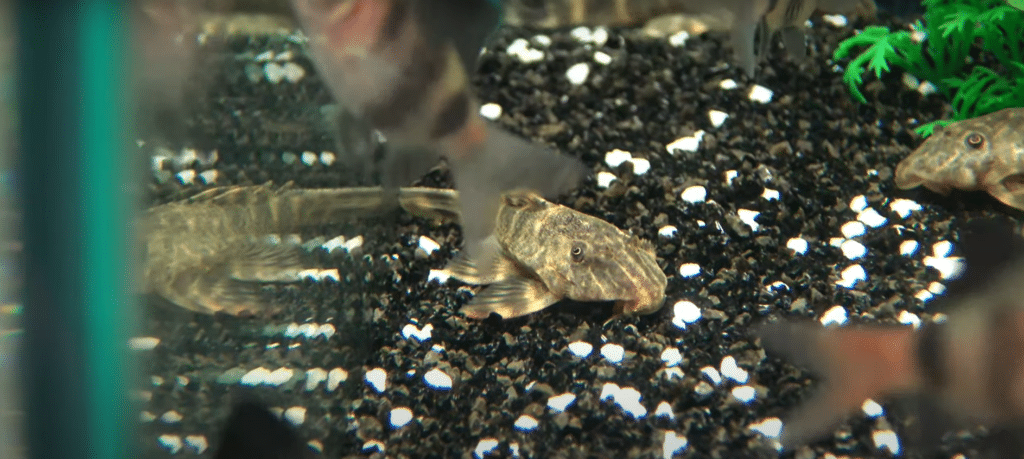
Creating a comfortable and pleasant environment for clown plecos is essential. So, we want to talk about how you can best replicate their natural environment.
These fish are known for cherishing their privacy. So, it’s advisable to provide them with many options for hiding spots, such as caves and pieces of driftwood. You will quickly notice that these fish often seek refuge in these shelters when they feel shy or wish to retreat.
The choice of substrate is equally important; using sand or fine gravel mimics their natural habitat and contributes to their overall well-being.
The presence of live plants adds a touch of authenticity and visual appeal to the aquatic environment you create for your Clown Plecos.
Clown plecos’ diet and feeding – what’s on the menu?
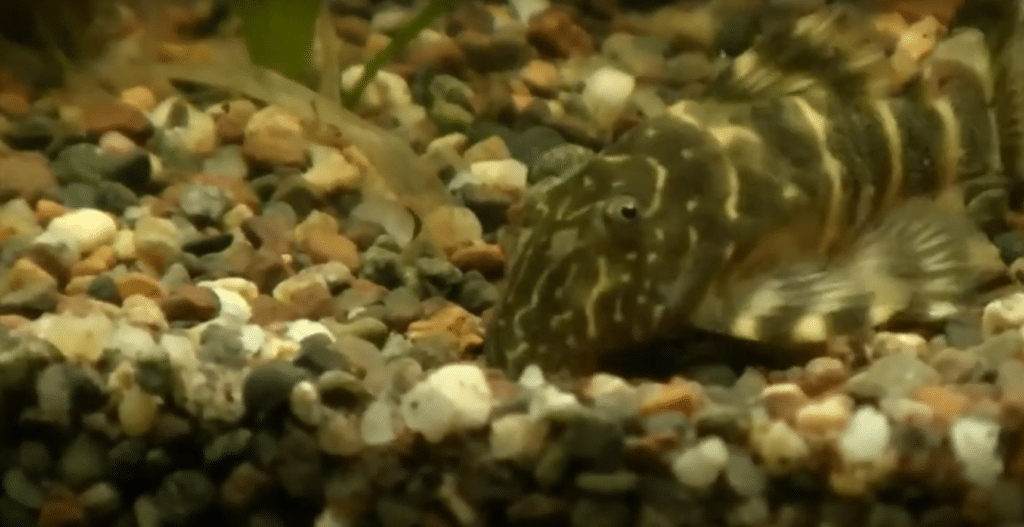
Clown Plecos primarily adhere to a herbivorous diet. Their sustenance is rooted in plant matter, making vegetables like cucumbers, zucchinis, peas, and lettuce their dietary staples.
Including algae wafers and spirulina pellets in their meals provides essential nutrients and variety, ensuring their nutritional needs are met.
While they predominantly consume plant-based foods, an occasional protein-rich treat such as bloodworms and brine shrimp can be introduced to balance their diet.
However, exercise caution when feeding, as overindulgence can lead to poor water quality and potential health complications.
Ideal tank mates, temperament & breeding – harmony in your tank
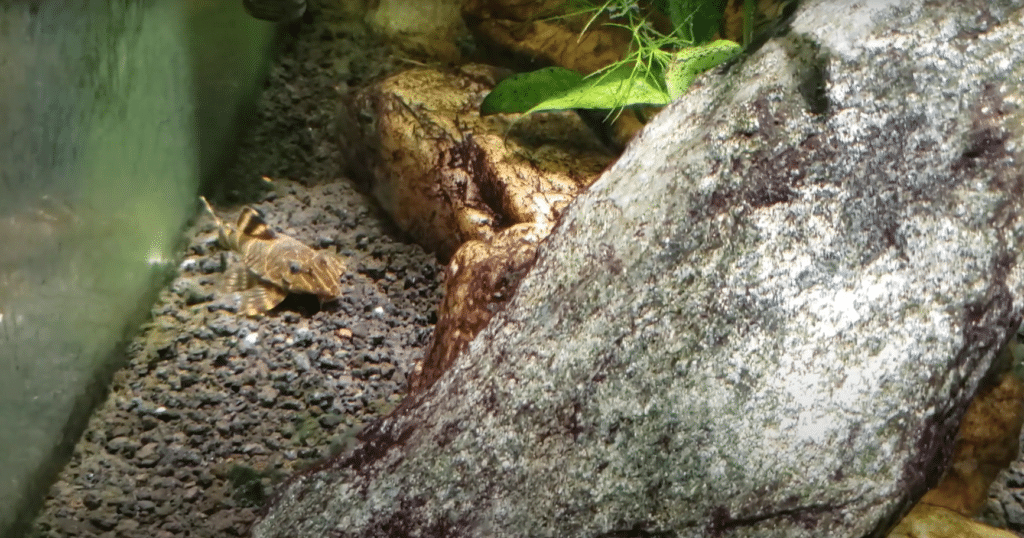
Clown Plecos are renowned for their peaceful disposition, making them exceptional additions to a community tank. Consider species like rasboras, ember tetras, and small minnows when selecting tank mates.
Steer clear of more aggressive fish, especially cichlids, which might intimidate your clown plecos. Note that Clown Plecos appreciate having their own territorial space and may occasionally exhibit mild territorial behaviour.
Breeding Clown Plecos can be an enriching experience for dedicated aquarists. Experts will recommend that you set up a separate breeding tank that has plenty of hiding spots like the ones we mentioned before to encourage breeding.
Usually, the female clown pleco will lay eggs in a cave. The male will then take on the role of guardian.
Once the eggs hatch, it’s important to provide enough space and a proper diet to ensure the healthy growth of the baby clown plecos.
Lifespan, variations & common health issues – beware of ich
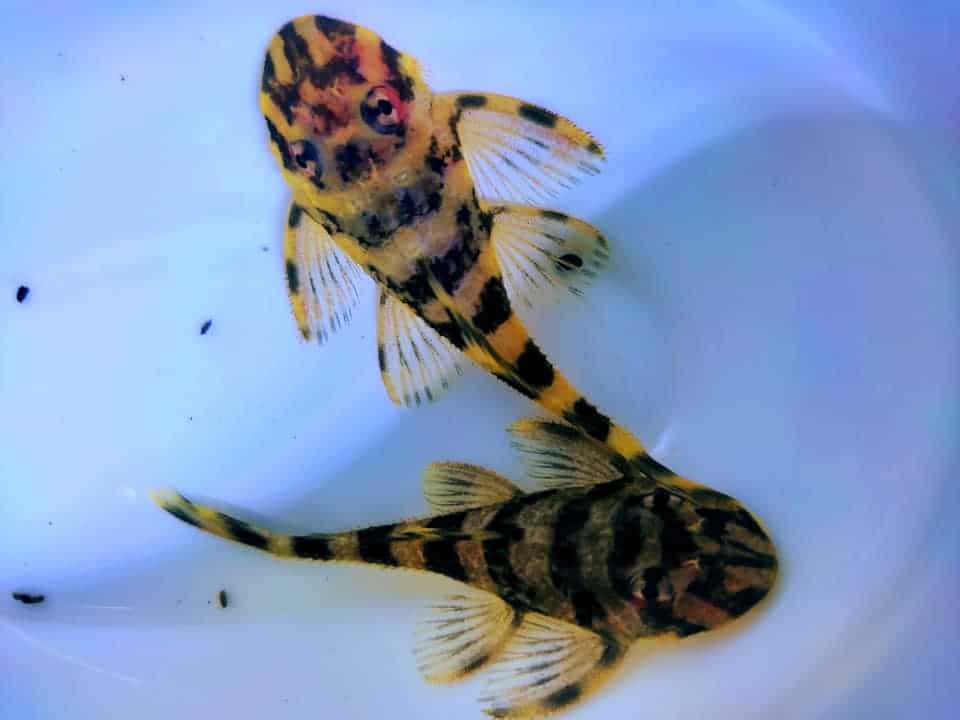
Clown plecos are considered hardy fish. However, they, like any other species, can be susceptible to specific diseases, such as ich.
As such, regular water changes and the maintenance of a well-functioning filtration system are crucial steps to prevent these issues and maintain your fish’s health.
With proper care and maintenance, clown plecos can live for up to ten years, making them a rewarding and relatively low-maintenance long-term addition to your aquarium. There are several variations of this species, like the butterfly clown pleco pictured above.
Nonetheless, it’s essential to remember that nothing in the world of fishkeeping comes with a guarantee.
Your questions answered about clown plecos
If you’ve still got questions about clown plecos, don’t worry. In this section, we answer some of our readers’ most frequently asked questions.
How big do clown plecos get?
The average male clown plecos grow up to about 3 to 4 inches, while females are a little smaller.
Can you keep two clown plecos together?
Clow plecos can live together in the same tank. Just ensure that the tank you choose is adequately sized and provides hiding spots to prevent territorial disputes.
How can you tell if a clown pleco is male or female?
Distinguishing between male and female clown plecos can be challenging, but males often have slightly thicker pectoral fins and can be slightly larger than females.
Can clown plecos live in hard water?
Clown plecos are adaptable to various water conditions, including hard water, but it’s essential to maintain stable and suitable parameters to ensure their well-being and health.
RELATED ARTICLES:

